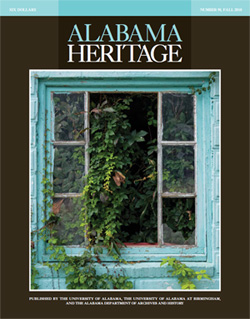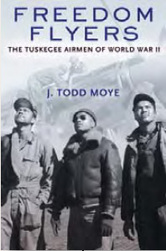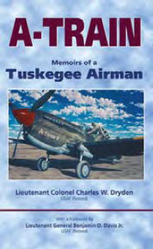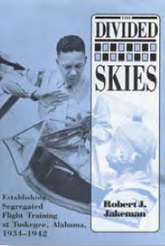|
On the cover: The Coosa County Farmer's and Civic Association in Rockford was on the 2010 Places in Peril List. (Robin McDonald)
|
FEATURE ABSTRACTS
 Col. Harry Maury
Col. Harry Maury(Alabama Department
of Archives and History)
The Enigmatic Colonel Maury of the Fifteenth Confederate Cavalry
By Zack C. Waters
Commander of the Fifteenth Confederate Cavalry, Col. Harry Maury proved to be both a hero and a rogue. Generations later, historians still struggle to classify him. A nephew of Gen. Dabney Maury, he benefited from the patronage common among prominent families, though his uncle blanched on occasion at his nephew’s untraditional and incompetent bouts. However, the young colonel’s men loved him, and many of them followed him from unit to unit. Wounded four times during the war, Maury’s fiery and stubborn personality remained with him until his death—which some believed was caused by unforgiving Unionists still angered by the Confederate officer’s passionate wartime conduct.
Additional Information
The following articles in the Encyclopedia of Alabama will also be of interest:
About the Author
Zack C. Waters, a fifth-generation Floridian, was born in Ocala in 1946. He received a BA (English) from the University of Florida and JD (law) from the University of Memphis. After working as a reporter and grant writer, Waters moved to Rome, Georgia, in 1981. He is currently adjunct professor at Georgia Highlands College. A young adult novel by Waters, Blood Moon Rider, was published recently, and he has written numerous articles for Civil War and historical publications, primarily chronicling the history of the Florida Confederate soldiers. Waters and Jimmy Edmonds coauthored A Small but Spartan Band: The Florida Brigade in Lee’s Army of Northern Virginia, published by the University of Alabama Press in 2010. Waters and his wife Vonda live in Rome, Georgia. They have two children—Luke (25) and Lauren Rose (21).
By Zack C. Waters
Commander of the Fifteenth Confederate Cavalry, Col. Harry Maury proved to be both a hero and a rogue. Generations later, historians still struggle to classify him. A nephew of Gen. Dabney Maury, he benefited from the patronage common among prominent families, though his uncle blanched on occasion at his nephew’s untraditional and incompetent bouts. However, the young colonel’s men loved him, and many of them followed him from unit to unit. Wounded four times during the war, Maury’s fiery and stubborn personality remained with him until his death—which some believed was caused by unforgiving Unionists still angered by the Confederate officer’s passionate wartime conduct.
Additional Information
The following articles in the Encyclopedia of Alabama will also be of interest:
- Alabama and the Civil War (feature)
- Battle of Mobile Bay
- Unionism
- Wilson’s Raid
- Wilson’s Raid (video)
About the Author
Zack C. Waters, a fifth-generation Floridian, was born in Ocala in 1946. He received a BA (English) from the University of Florida and JD (law) from the University of Memphis. After working as a reporter and grant writer, Waters moved to Rome, Georgia, in 1981. He is currently adjunct professor at Georgia Highlands College. A young adult novel by Waters, Blood Moon Rider, was published recently, and he has written numerous articles for Civil War and historical publications, primarily chronicling the history of the Florida Confederate soldiers. Waters and Jimmy Edmonds coauthored A Small but Spartan Band: The Florida Brigade in Lee’s Army of Northern Virginia, published by the University of Alabama Press in 2010. Waters and his wife Vonda live in Rome, Georgia. They have two children—Luke (25) and Lauren Rose (21).
 Dr. Eugene Smith's only daughter
Dr. Eugene Smith's only daughteris pictured in this 1889 photograph
(W.S. Hoole Special Collections Library,
The University of Alabama)
Capsule in a Cornerstone: The Treasure of Smith Hall
By John Hall
Part of the “Greater University” plan, the construction of Smith Hall at the University of Alabama received great attention. In conjunction with placing the building’s cornerstone, university officials and community members assembled a time capsule commemorating their era in the university’s history. John Hall catalogues the capsule’s opening in 2010, offering a rare glimpse at the items—from cartoons to epaulettes, wedding rings to family photographs—considered special enough to warrant such preservation. This issue of Alabama Heritage will be included in a new capsule, soon to be placed in the Smith Hall cornerstone for another hundred years.
Additional Information
The following articles in the Encyclopedia of Alabama will also be of interest:
About the Author
John Hall is director of the emerging Black Belt Museum at the University of West Alabama in Livingston. He was assistant director of the Alabama Museum of Natural History in Smith Hall for twenty years, and, though he knew there was a capsule in the cornerstone, he never dreamed how interesting it would be. Hall is a frequent contributor toAlabama Heritage and has contributed articles on the Hodges Meteorite, Hernando de Soto, Eugene Allen Smith (with Frances Robb), William Bartram, and Prince Madoc. He and environmental photographer Beth Maynor Young are authors of the prize-winning University of Alabama Press book, Headwaters: A Journey on Alabama Rivers.
By John Hall
Part of the “Greater University” plan, the construction of Smith Hall at the University of Alabama received great attention. In conjunction with placing the building’s cornerstone, university officials and community members assembled a time capsule commemorating their era in the university’s history. John Hall catalogues the capsule’s opening in 2010, offering a rare glimpse at the items—from cartoons to epaulettes, wedding rings to family photographs—considered special enough to warrant such preservation. This issue of Alabama Heritage will be included in a new capsule, soon to be placed in the Smith Hall cornerstone for another hundred years.
Additional Information
The following articles in the Encyclopedia of Alabama will also be of interest:
- Braxton Bragg Comer (1907-11)
- University of Alabama
- Alabama Museum of Natural History
- University of Alabama Football
- Iron Bowl
About the Author
John Hall is director of the emerging Black Belt Museum at the University of West Alabama in Livingston. He was assistant director of the Alabama Museum of Natural History in Smith Hall for twenty years, and, though he knew there was a capsule in the cornerstone, he never dreamed how interesting it would be. Hall is a frequent contributor toAlabama Heritage and has contributed articles on the Hodges Meteorite, Hernando de Soto, Eugene Allen Smith (with Frances Robb), William Bartram, and Prince Madoc. He and environmental photographer Beth Maynor Young are authors of the prize-winning University of Alabama Press book, Headwaters: A Journey on Alabama Rivers.
 After Viola Liuzzo's murder,
After Viola Liuzzo's murder, news sources spread this photograph,
taken in 1941, when Liuzzo
was twenty-nine
(Penny Liuzzo Herrington)
Vindicating Viola Liuzzo
By Mary Stanton
In 1965 Detroit housewife, mother, and student Viola Liuzzo traveled south to participate in the civil rights events taking place in Selma. She never saw home again. Murdered by the Klan in the aftermath of the Voting Rights March, Liuzzo quickly became a flashpoint for many of society’s issues, as people from all sides of the political spectrum tried to figure out what motivated Liuzzo’s involvement. At the time, many cast her as a rebellious northern woman who meddled where she didn’t belong. Her murder also evoked debates, often heated, about “proper” roles for women. Decades after the fact, though, with the revelation of an FBI cover-up and smear campaign, Liuzzo’s legacy has been vindicated.
Additional Information
Mary Stanton is also the author of a brief biographical sketch of Viola Liuzzo for the on-line Encyclopedia of Alabama.
The following articles in the Encyclopedia of Alabama will also be of interest:
About the Author
Mary Stanton is a historian whose primary interest is white civil rights activism. She has written four books about the movement years in Alabama, including From Selma to Sorrow: The Life and Death of Viola Liuzzo (University of Georgia Press, 1998), on which this article was based. Research materials associated with producing From Selma To Sorrow are housed at the National Center for the Study of Civil Rights and African American Culture at Alabama State University in Montgomery. The center, directed by Dr. Janice Franklin, serves as a clearinghouse for information about Montgomery’s unique role as both the cradle of the Confederacy and the modern civil rights movement. Dr. Howard Robinson is the archivist.
By Mary Stanton
In 1965 Detroit housewife, mother, and student Viola Liuzzo traveled south to participate in the civil rights events taking place in Selma. She never saw home again. Murdered by the Klan in the aftermath of the Voting Rights March, Liuzzo quickly became a flashpoint for many of society’s issues, as people from all sides of the political spectrum tried to figure out what motivated Liuzzo’s involvement. At the time, many cast her as a rebellious northern woman who meddled where she didn’t belong. Her murder also evoked debates, often heated, about “proper” roles for women. Decades after the fact, though, with the revelation of an FBI cover-up and smear campaign, Liuzzo’s legacy has been vindicated.
Additional Information
Mary Stanton is also the author of a brief biographical sketch of Viola Liuzzo for the on-line Encyclopedia of Alabama.
The following articles in the Encyclopedia of Alabama will also be of interest:
- Selma to Montgomery March
- Southern Christian Leadership Conference (SCLC)
- Modern Civil Rights Movement in Alabama
- Voila Gregg Liuzzo (photograph)
- Viola Gregg Liuzzo (video)
- Leroy Moton
- Viola Liuzzo Memorial Marker
About the Author
Mary Stanton is a historian whose primary interest is white civil rights activism. She has written four books about the movement years in Alabama, including From Selma to Sorrow: The Life and Death of Viola Liuzzo (University of Georgia Press, 1998), on which this article was based. Research materials associated with producing From Selma To Sorrow are housed at the National Center for the Study of Civil Rights and African American Culture at Alabama State University in Montgomery. The center, directed by Dr. Janice Franklin, serves as a clearinghouse for information about Montgomery’s unique role as both the cradle of the Confederacy and the modern civil rights movement. Dr. Howard Robinson is the archivist.
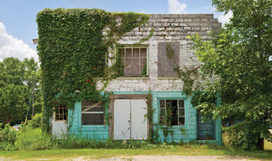 The Coosa County Farmer's and Civic Association
The Coosa County Farmer's and Civic Association(Robin McDonald)
Places in Peril 2010: Preservation to Make a Difference
By Donna McPherson Castellano and David Schneider
In conjunction with the Alabama Historical Commission and the Alabama Trust for Historic Preservation, Alabama Heritage presents its annual showcase of endangered historic properties throughout the state. This year’s lineup includes a cemetery, several homes of prominent Alabama families, a house that predates the Civil War, a community theater, a train depot, a black Farmer’s and Civic Association building, a family farm, the Federal Road, and cotton mills and historic wooden windows statewide. By educating readers about urgent preservation needs at these historically and culturally valuable sites, we hope to encourage their involvement in preserving these and other relevant sites in their communities.
Additional Information
Information about the Alabama Trust for Historic Preservation is available online, by mail at Station 45, Livingston, AL 35470, or by phone at 205-652-3497.
The following articles in the Encyclopedia of Alabama will also be of interest:
About the Author
Donna Castellano has spent the past twenty-five years researching, writing, and preserving Alabama history. She holds an MA in history from the University of Alabama in Huntsville and is the principal of EmbarkAlabama, a freelance writing and public relations firm. She is the author of Through the Garden Gate: The Gardens of Historic Huntsville and A Century of Service: Celebrating 100 Years of the YMCA in the Valley.
David B. Schneider is the Executive Director of the Alabama Trust for Historic Preservation. With more than twenty-nine years of professional historic preservation experience, Schneider is the former Executive Director of the Historic Beaufort Foundation in Beaufort, SC; the Historic Preservation Trust of Lancaster County, PA; and the Berkeley County (SC) Historical Society Museum. He holds a MA degree in Historic Preservation from Middle Tennessee State University (1981) and a BBA degree from the University of Georgia (1979).
By Donna McPherson Castellano and David Schneider
In conjunction with the Alabama Historical Commission and the Alabama Trust for Historic Preservation, Alabama Heritage presents its annual showcase of endangered historic properties throughout the state. This year’s lineup includes a cemetery, several homes of prominent Alabama families, a house that predates the Civil War, a community theater, a train depot, a black Farmer’s and Civic Association building, a family farm, the Federal Road, and cotton mills and historic wooden windows statewide. By educating readers about urgent preservation needs at these historically and culturally valuable sites, we hope to encourage their involvement in preserving these and other relevant sites in their communities.
Additional Information
Information about the Alabama Trust for Historic Preservation is available online, by mail at Station 45, Livingston, AL 35470, or by phone at 205-652-3497.
The following articles in the Encyclopedia of Alabama will also be of interest:
- Eufaula
- Lamar County
- Lauderdale County
- Folk Buildings
- Carrollton
- DeKalb County
- Coosa County
- Alabama Railroads
- Plantation Architecture in Alabama
- Mobile County
- John Gill Shorter
- Face of Henry Wells, Old Pickens County Courthouse
- Rockford
- Old Rock Jail
- Old Federal Road
- Old Cotton Mill in Tallassee
- Avondale Mills
About the Author
Donna Castellano has spent the past twenty-five years researching, writing, and preserving Alabama history. She holds an MA in history from the University of Alabama in Huntsville and is the principal of EmbarkAlabama, a freelance writing and public relations firm. She is the author of Through the Garden Gate: The Gardens of Historic Huntsville and A Century of Service: Celebrating 100 Years of the YMCA in the Valley.
David B. Schneider is the Executive Director of the Alabama Trust for Historic Preservation. With more than twenty-nine years of professional historic preservation experience, Schneider is the former Executive Director of the Historic Beaufort Foundation in Beaufort, SC; the Historic Preservation Trust of Lancaster County, PA; and the Berkeley County (SC) Historical Society Museum. He holds a MA degree in Historic Preservation from Middle Tennessee State University (1981) and a BBA degree from the University of Georgia (1979).
To read about more places in peril, click here for our Places in Peril blog.
DEPARTMENT ABSTRACTS
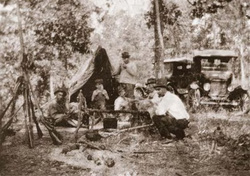 A camp picture from 1923
A camp picture from 1923(David Epps)
Recollections
Generations Go A’Huntin’
By Joseph M. Jones
For over a century, members of one Alabama family have celebrated their ancestors by gathering for an annual squirrel hunt near the Talladega National Forest. Author Joe Jones chronicles the hunt, the family that preserves it, and the community they share.
Additional Information
The following articles in the Encyclopedia of Alabama will also be of interest:
About the Author
Joseph M. Jones of Huntsville is a former newsman and retired director of public affairs at the NASA–Marshall Space Flight Center. In recent years he has developed a keen interest in matters of the past and authored an article in the Winter 2009 issue of Alabama Heritage on the McCrarys of Madison County.
Generations Go A’Huntin’
By Joseph M. Jones
For over a century, members of one Alabama family have celebrated their ancestors by gathering for an annual squirrel hunt near the Talladega National Forest. Author Joe Jones chronicles the hunt, the family that preserves it, and the community they share.
Additional Information
The following articles in the Encyclopedia of Alabama will also be of interest:
About the Author
Joseph M. Jones of Huntsville is a former newsman and retired director of public affairs at the NASA–Marshall Space Flight Center. In recent years he has developed a keen interest in matters of the past and authored an article in the Winter 2009 issue of Alabama Heritage on the McCrarys of Madison County.
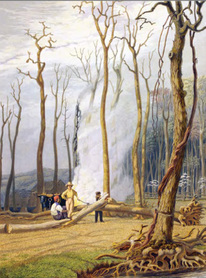 Settlers cutting down trees
Settlers cutting down trees that had been girdled
(Library of Congress)
Becoming Alabama
Quarter by Quarter
By Joseph W. Pearson, Megan L. Bever, and Matthew Downs
Editor’s Note: Alabama Heritage, the Summersell Center for Study of the South, the University of Alabama Department of History, and the Alabama Tourism Department offer this department as a part of the statewide “Becoming Alabama” initiative—a cooperative venture of state organizations to commemorate Alabama’s experiences related to the Creek War, the Civil War, and the civil rights movement. Quarter by quarter we will take you to the corresponding seasons 200, 150, and 50 years ago—sometimes describing the most pivotal events, sometimes describing daily life, but always illuminating a world in flux. We will wait for the ultimate outcomes as our forbears did—over time. For those joining the story in progress, you can find earlier quarters on our website.
In this quarter’s installment of Becoming Alabama, Alabama Heritagetakes readers back once again to the Creek Wars, the Civil War, and the civil rights movement. Joseph Pearson explores the hardscrabble life of settlers in the Mississippi Territory as they took a chance on settling in Indian country. Megan Bever discusses the important role that secessionists’ beliefs played in the 1860 presidential election, while Matthew Downs considers the affect of the civil rights on the nation’s choice between presidential candidates a century later. This issue also features the new Becoming Alabama logo, designed by the Becoming Alabama partners to highlight the significance of these historic periods of our state’s history.
Additional Information
To learn more about the Becoming Alabama initiative and to read the earlier quarterly installments of the column, visit the Becoming Alabama page. An updated calendar of events is available on the website of the Alabama Tourism Board.
The following articles in the Encyclopedia of Alabama will also be of interest:
Fall 1810:
Fall 1860:Fall 1860 Multimedia:
Fall 1960:
About the Author
Joseph W. Pearson is currently a PhD student in the Department of History at the University of Alabama. His research interests include the nineteenth-century South, antebellum politics, and political culture.
Megan L. Bever is currently a PhD student in the Department of History at the University of Alabama. Her research interests include the nineteenth-century South and the Civil War in American culture.
Matthew L. Downs is an assistant professor of history at the University of Alabama at Birmingham. He recently received his PhD from the University of Alabama with a dissertation on the federal government’s role in the economic development of the Tennessee Valley.
Quarter by Quarter
By Joseph W. Pearson, Megan L. Bever, and Matthew Downs
Editor’s Note: Alabama Heritage, the Summersell Center for Study of the South, the University of Alabama Department of History, and the Alabama Tourism Department offer this department as a part of the statewide “Becoming Alabama” initiative—a cooperative venture of state organizations to commemorate Alabama’s experiences related to the Creek War, the Civil War, and the civil rights movement. Quarter by quarter we will take you to the corresponding seasons 200, 150, and 50 years ago—sometimes describing the most pivotal events, sometimes describing daily life, but always illuminating a world in flux. We will wait for the ultimate outcomes as our forbears did—over time. For those joining the story in progress, you can find earlier quarters on our website.
In this quarter’s installment of Becoming Alabama, Alabama Heritagetakes readers back once again to the Creek Wars, the Civil War, and the civil rights movement. Joseph Pearson explores the hardscrabble life of settlers in the Mississippi Territory as they took a chance on settling in Indian country. Megan Bever discusses the important role that secessionists’ beliefs played in the 1860 presidential election, while Matthew Downs considers the affect of the civil rights on the nation’s choice between presidential candidates a century later. This issue also features the new Becoming Alabama logo, designed by the Becoming Alabama partners to highlight the significance of these historic periods of our state’s history.
Additional Information
To learn more about the Becoming Alabama initiative and to read the earlier quarterly installments of the column, visit the Becoming Alabama page. An updated calendar of events is available on the website of the Alabama Tourism Board.
The following articles in the Encyclopedia of Alabama will also be of interest:
Fall 1810:
- Territorial Period and Early Statehood
- Creeks in Alabama
- Plan of Civilization
- Treaty of New York, 1790
- Mississippi Territory
- Engraving of Creek Town Layout
- St. Stephens, Alabama’s Territorial Capital (video)
Fall 1860:Fall 1860 Multimedia:
Fall 1960:
About the Author
Joseph W. Pearson is currently a PhD student in the Department of History at the University of Alabama. His research interests include the nineteenth-century South, antebellum politics, and political culture.
Megan L. Bever is currently a PhD student in the Department of History at the University of Alabama. Her research interests include the nineteenth-century South and the Civil War in American culture.
Matthew L. Downs is an assistant professor of history at the University of Alabama at Birmingham. He recently received his PhD from the University of Alabama with a dissertation on the federal government’s role in the economic development of the Tennessee Valley.
 A barn owl pellet
A barn owl pellet(Sara Bright)
Nature Journal
In the Footsteps of Gosse
By L. J. Davenport
L. J. Davenport and other members of the Birmingham Audubon Society follow the travels of Philip Henry Gosse, the British naturalist whose 1838 visit to Alabama led to the publication of the state’s first scientific work, Letters from Alabama, (U.S.) Chiefly Relating to Natural History.
Additional Information
About the Author
Larry Davenport is a professor of biology at Samford University in Birmingham, Alabama.
In the Footsteps of Gosse
By L. J. Davenport
L. J. Davenport and other members of the Birmingham Audubon Society follow the travels of Philip Henry Gosse, the British naturalist whose 1838 visit to Alabama led to the publication of the state’s first scientific work, Letters from Alabama, (U.S.) Chiefly Relating to Natural History.
Additional Information
- Larry Davenport’s new book, Nature Journal, based on his popular long-running column in Alabama Heritage, is now available from the University of Alabama Press.
- Philip Gosse’s Letters from Alabama is available from the University of Alabama Press.
- The University of Alabama Press has also released a 2010 biography, Philip Henry Gosse: Science and Art in Letters from Alabama and Entomologia Alabamensis, by Gary R. Mullen and Taylor D. Littleton.
- Philip Henry Gosse
- Entomologia Alabamensis
- Alabama Wildflower (gallery)
- Philip H. and Edmund W. Gosse
About the Author
Larry Davenport is a professor of biology at Samford University in Birmingham, Alabama.
Reading the Southern Past
Flying with the Tuskegee Airmen
By Stephen Goldfarb
This quarter’s review traces the history of the Tuskegee Aviation Program and the airmen it trained. Drawing on J. Todd Moye’s Freedom Flyers: The Tuskegee Airmen of World War II, Charles W. Dryden’s A-Train: Memoirs of a Tuskegee Airman, and Robert Jakeman’s The Divided Skies: Establishing Segregated Flight Training at Tuskegee, Alabama, 1934-1942, Stephen Goldfarb explores the history of this significant chapter of African American and military history.
Additional Information
In the winter of 1993, Alabama Heritage published Jerry A. Davis’s “Black Wings of Tuskegee,” which was a favorite with our subscribers.
About the Author
Stephen Goldfarb holds a PhD in the history of science and technology. He retired from a public library in 2003.
Flying with the Tuskegee Airmen
By Stephen Goldfarb
This quarter’s review traces the history of the Tuskegee Aviation Program and the airmen it trained. Drawing on J. Todd Moye’s Freedom Flyers: The Tuskegee Airmen of World War II, Charles W. Dryden’s A-Train: Memoirs of a Tuskegee Airman, and Robert Jakeman’s The Divided Skies: Establishing Segregated Flight Training at Tuskegee, Alabama, 1934-1942, Stephen Goldfarb explores the history of this significant chapter of African American and military history.
Additional Information
In the winter of 1993, Alabama Heritage published Jerry A. Davis’s “Black Wings of Tuskegee,” which was a favorite with our subscribers.
About the Author
Stephen Goldfarb holds a PhD in the history of science and technology. He retired from a public library in 2003.
